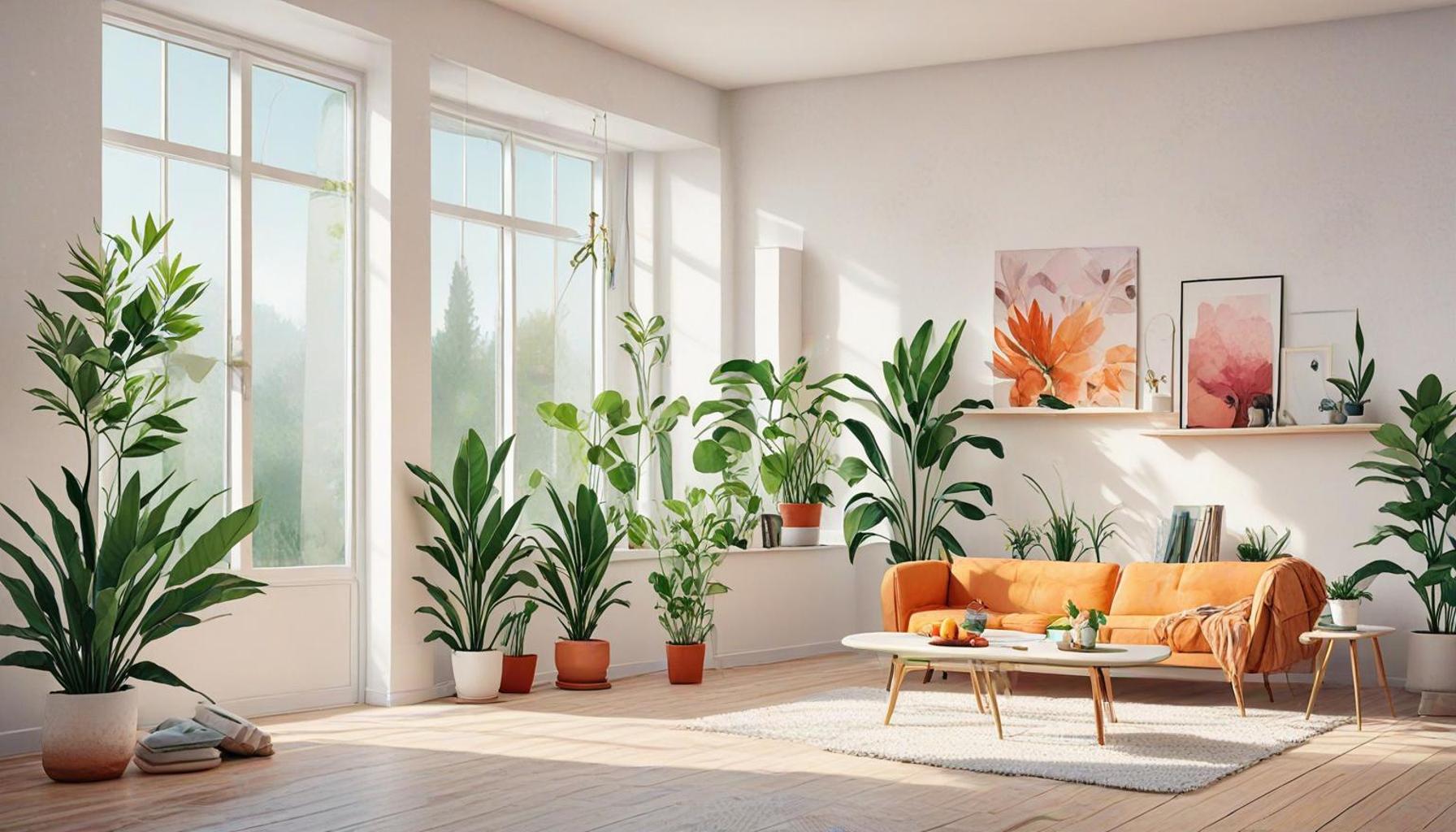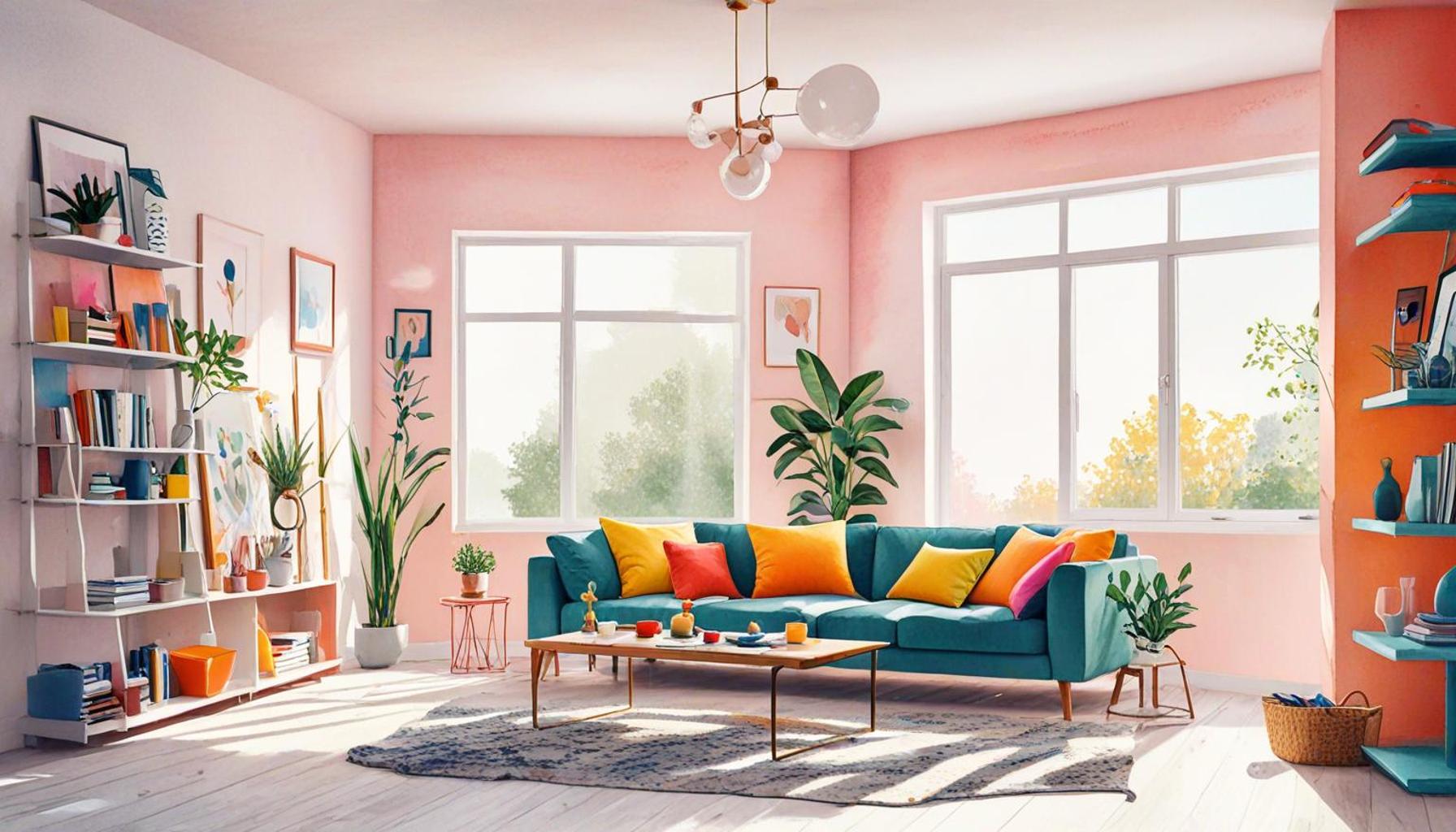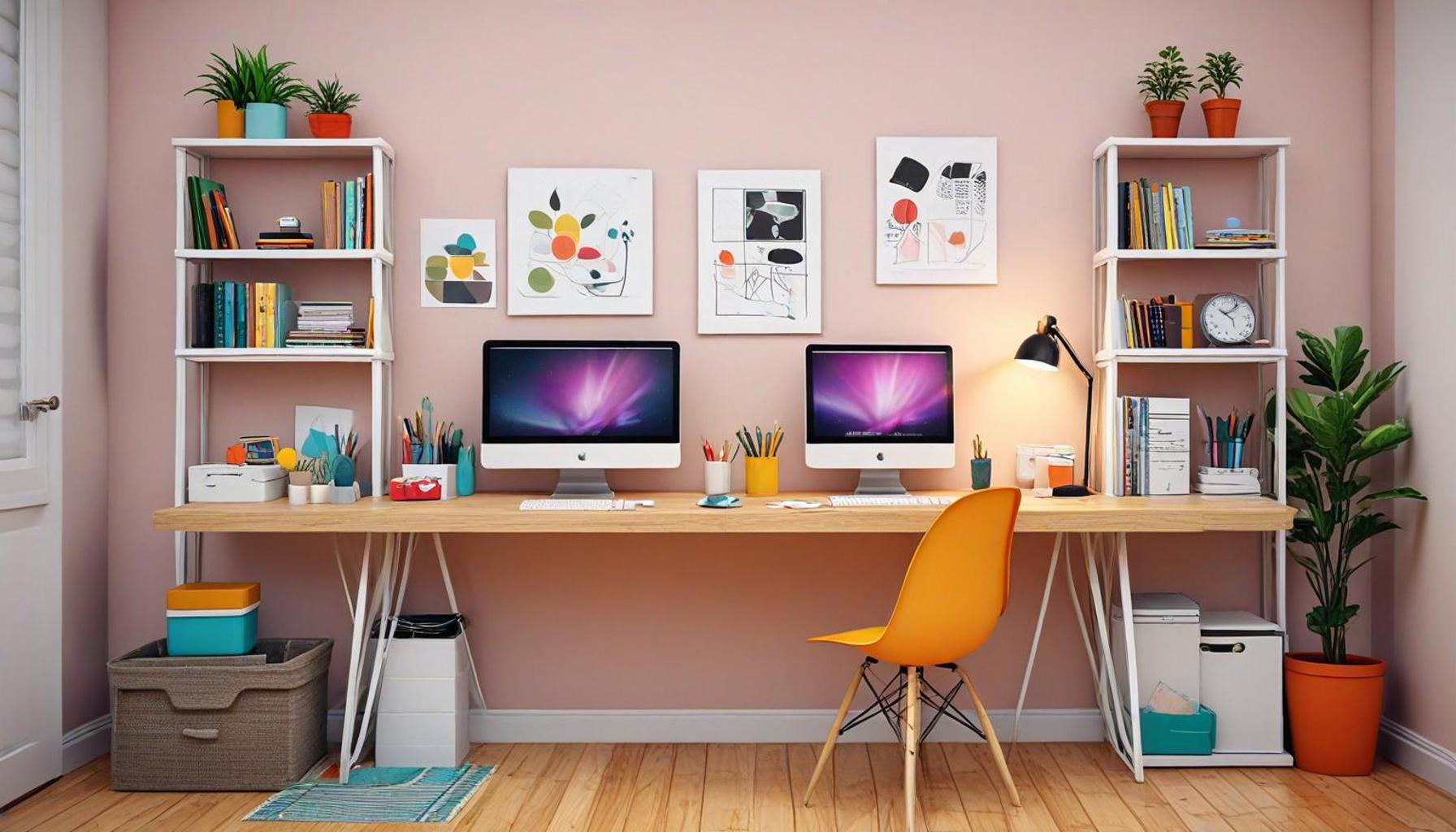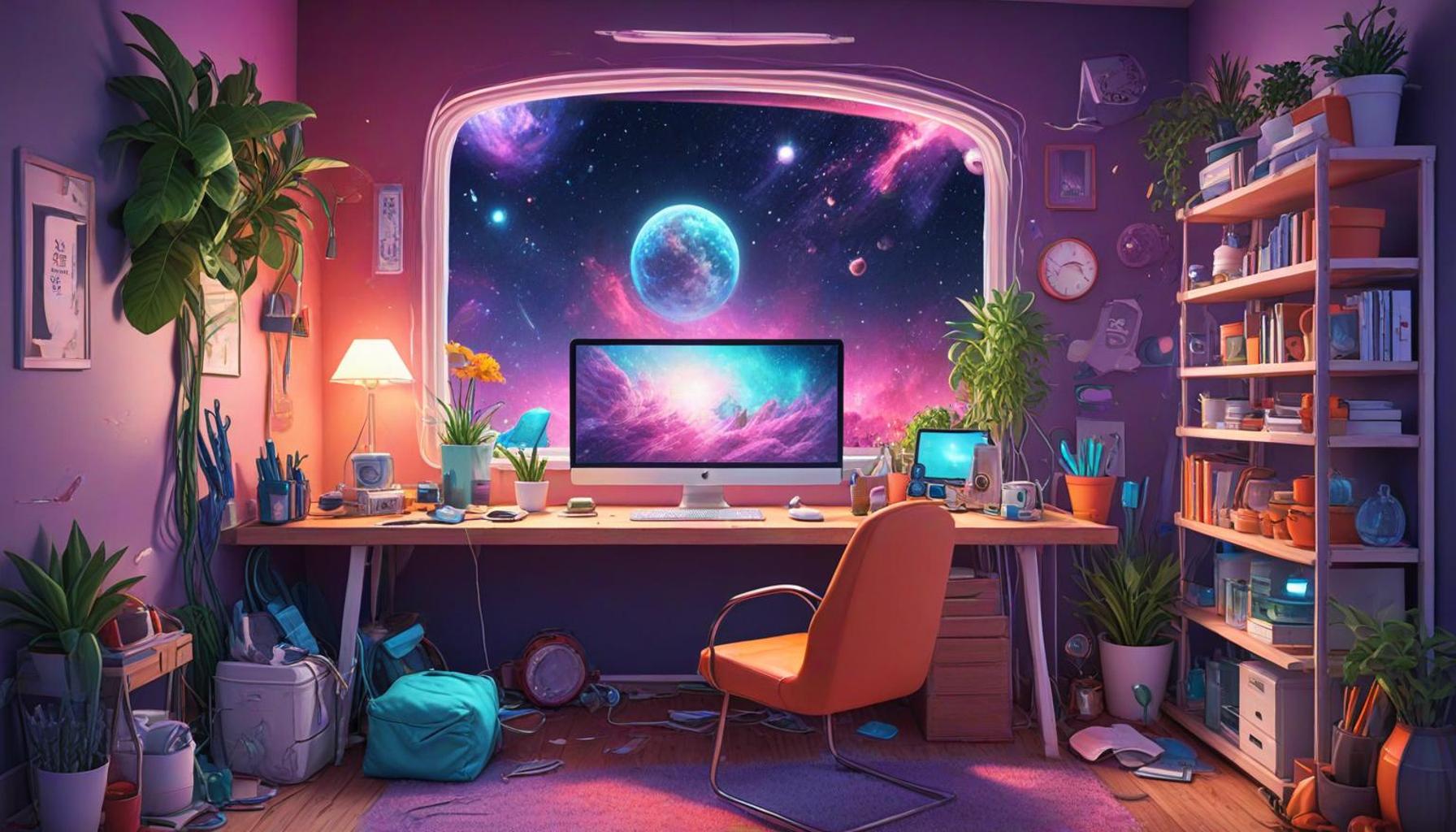How the integration of plants and natural elements can optimize space in minimalist homes

Transforming Minimalist Spaces with Nature
In recent years, minimalist homes have gained immense popularity, reflecting a lifestyle choice that prioritizes simplicity and function. But how can homeowners further enhance these spaces? The integration of plants and natural elements proves to be a game-changer, as it not only beautifies but also optimizes space effectively.
Incorporating nature into your living environment offers numerous benefits:
- Improved Air Quality: Plants act as natural air purifiers, enhancing indoor air quality. Certain varieties, such as snake plants and peace lilies, are known to filter out harmful toxins from the air, making your home not only more visually appealing but also healthier.
- Enhanced Aesthetics: Greenery adds vibrant color and texture, creating a cozy atmosphere. For instance, adding a small indoor herb garden not only brightens up your kitchen but also provides fresh ingredients for cooking, merging beauty with practicality.
- Space Utilization: Vertical gardens and hanging plants maximize limited floor space. Utilizing wall-mounted planters or shelves can transform a plain wall into a lush green feature without sacrificing valuable square footage.
Furthermore, natural materials—such as wood, stone, and bamboo—bring a warm touch to minimalist designs. These elements contribute not just to the visual appeal but also foster a serene, calming environment. For example, using reclaimed wood furniture or bamboo flooring can create a harmonious balance between the minimalist aesthetic and nature’s warmth.
As urban living spaces become more compact, understanding how to harmonize minimalist design with the natural world is essential. Incorporating plants such as pothos or spider plants requires minimal care, making them perfect for busy individuals who appreciate low-maintenance options. Additionally, landscapes like outdoor patios or balconies can be transformed into urban oases with the careful selection of potted plants, giving residents a slice of nature amidst the concrete jungle.
To further explore this concept, consider using color palettes inspired by nature; hues of green, earth tones, and light pastels can complement the natural elements in your home. Textiles made from organic materials like linen or cotton can also enhance the connection to nature while maintaining a minimalist approach.
Ultimately, together with thoughtful organization and a keen eye for design, integrating plants and natural elements can breathe life into your home while optimizing every inch of your space.
DISCOVER MORE: Click here for tips on maximizing your space
Maximizing Space with Living Greenery
As minimalist homes embrace the ethos of “less is more,” integrating plants and natural elements becomes an innovative solution to enhance both utility and aesthetics. Homeowners can transform cramped corners into green sanctuaries, leading to a more inviting and serene living environment. The strategic placement of plants allows individuals to take advantage of vertical space, thus maintaining that essential open feel that minimalism strives for.
One of the most compelling ways to achieve this is through vertical gardening. This approach makes plants a functional component of the household, turning walls and unused spaces into living artworks. Vertical gardens can flourish even in small apartments, where traditional gardening may not be feasible. Utilizing wall-mounted planters, owners can cultivate a variety of plants such as ferns, succulents, and trailing vines. This not only saves floor space but also creates an alluring visual element that draws the eye upward, contributing to an illusion of height and spaciousness.
Additionally, incorporating natural elements such as wood and stone can enhance the overall atmosphere, creating a seamless transition between indoor and outdoor living. For instance, a reclaimed wood shelf can house an assortment of potted plants, offering a rustic charm while keeping surfaces organized and clutter-free. Elements like bamboo screens or stone tiles can also add texture and depth, breaking away from the starkness often associated with minimalism.
- Hanging pots: Suspend colorful planters from the ceiling to add dimension and greenery without overcrowding surfaces.
- Window sills: Take advantage of natural light by placing herbs or small plants in sunny spots to combine functionality with style.
- Multi-functional furniture: Opt for furniture like ottomans or benches that double as storage for gardening supplies while providing designated space for plants.
Another important aspect to consider is the selection of low-maintenance plants, which aligns with the minimalist lifestyle. Choosing indoor plants such as snake plants or ZZ plants not only requires minimal care but also thrives in varying light conditions. This makes them ideal companions for busy individuals who want to enhance their environment without cumbersome upkeep. Moreover, these hardy species contribute to a tranquil atmosphere, promoting relaxation and mental well-being, which is another fundamental principle of minimalist living.
Incorporating plants and natural materials entails more than just aesthetic enhancement; it is about creating a harmonious balance that radiates tranquility. By integrating thoughtful designs and choosing the right elements, homeowners can optimize their spaces while connecting with nature effortlessly. The fusion of green life and innovative design approaches holds the potential to redefine modern living, encouraging a healthier, happier way of life.
| Category | Advantages |
|---|---|
| Air Quality Improvement | Integrating indoor plants significantly enhances air quality by removing toxins, resulting in a healthier living space. |
| Visual Aesthetics | Natural elements serve as striking focal points in minimalist homes, creating visually appealing environments that promote tranquility. |
| Space Optimization | Plants utilize vertical space effectively, such as wall-mounted planters, maximizing living areas without overcrowding. |
| Mood Enhancement | Natural elements can elevate mood, reduce stress, and enhance creativity, offering emotional benefits within minimalist designs. |
The marriage of plants and natural elements with minimalist design not only fulfills a functional purpose but resonates deeply with our need for greenery in our living spaces. By strategically placing plants, homeowners can create a blend of function and aesthetics that invites nature indoors. Utilizing vertical gardens or even hanging terrariums allows for impeccable space management, ensuring that even small rooms feel expansive and lively. Moreover, various studies highlight the psychological advantages of incorporating nature within interior design, demonstrating that plants can significantly reduce stress and enhance productivity. As individuals continue to seek balance in their hectic lives, the integration of such organic elements in home decoration becomes not just a trend, but a requisite for emotional well-being. With flourishing greenery enveloping minimalist interiors, simple spaces become dynamic habitats that nurture both body and mind while meticulously maintaining a uncluttered ambiance.
DISCOVER MORE: Click here to transform your space
Creating Functional Biophilic Designs
In the pursuit of minimalist living, the concept of biophilic design emerges as a pivotal trend that marries nature with functionality. By integrating plants and natural materials, homeowners can infuse ambiance while optimizing their limited spaces. This approach goes beyond mere decoration; it fosters a deeper connection with nature, which is increasingly recognized for its positive psychological impacts.
To deepen this connection, consider the strategic placement of large indoor plants in open spaces. For instance, a tall fiddle leaf fig or a palm can serve as a striking focal point in a living room, drawing attention away from minimal furnishings by adding layers of lushness. This not only enhances aesthetics but also enables homeowners to maximize small footprints without sacrificing style. Moreover, the use of plants like rubber trees or peace lilies have the added bonus of purifying indoor air, contributing to a healthier home environment.
Another innovative way to incorporate natural elements is through the use of green walls—structures that combine plants and wall-mounted systems to create stunning visual backdrops. These walls can be installed in areas like entryways or home offices, transforming otherwise mundane spaces into vibrant, living areas. As these green walls flourish, they become dynamic art pieces that change with the seasons, continually enhancing the home’s atmosphere.
- Potted plants: Select pots made from eco-friendly materials that complement the minimalist aesthetic, ensuring each piece enhances rather than detracts from the overall design.
- Terrariums: Utilize glass containers to create miniature ecosystems that can fit snugly on shelves or tables, offering a fascinating focal point while showcasing plant life.
- Natural light solutions: When planning plant placement, prioritize areas that receive ample sunlight; this not only supports plant health but also creates a warm, inviting space.
Moreover, the incorporation of water features, like small tabletop fountains, can bring a sense of tranquility and relaxation. The gentle sound of flowing water acts as a natural white noise, ideal for creating a calming atmosphere in a minimalist space. These features can be incorporated with small plants that thrive in humid environments, such as ferns or peace lilies, further enhancing the natural feel while saving space.
Additionally, utilizing plants or natural elements for room dividers can both optimize space and maintain an airy openness. An indoor vertical trellis adorned with climbing plants can delineate spaces without imposing a visual barrier, making fluid transitions between different areas within the home. This method not only highlights the beauty of greenery but also serves a functional purpose, clearly differentiating spaces for work, relaxation, or socialization.
Lastly, incorporating seasonal changes with plants brings a dynamic aspect to minimalist homes. Using seasonal flowers or foliage in specific areas enables homeowners to refresh their decor regularly without the need for excess furnishings. This cyclical approach not only nurtures creativity but also ensures that the home environment remains vibrant and alive throughout the year, adhering to the minimalist principle of mindful living.
DISCOVER MORE: Click here to learn how minimalism can enhance your time management
Embracing the Harmony of Nature and Minimalism
In conclusion, the integration of plants and natural elements in minimalist homes not only enhances aesthetic appeal but also maximizes space functionality and promotes well-being. By adopting biophilic design, homeowners can create environments that reflect serenity and sophistication while fostering a profound connection with nature. The strategic placement of large indoor plants, the incorporation of green walls, and the use of eco-friendly decor such as terrariums and water features contribute to transforming minimalist interiors into vibrant living spaces.
This holistic approach enables individuals to cultivate a healthier atmosphere, as many plants serve air-purifying functions and provide calming effects that enhance mental clarity and relaxation. Moreover, the use of plants as natural dividers and seasonal decor keeps spaces dynamic, allowing residents to refresh their home regularly without cluttering their environment. As minimalism encourages intentional living, embracing these natural elements aligns perfectly with the ethos of reducing excess while enriching life.
Ultimately, integrating plants and natural features is more than just an interior design trend; it’s a way to bring warmth and vitality into the often stark confines of minimalist living. As you consider your own space, remember the powerful impact that even small adjustments can make. This harmonious blend of functionality and aesthetics awaits you, inviting you to explore new depths of creativity and well-being in your home.


